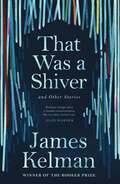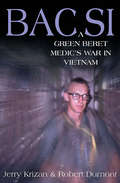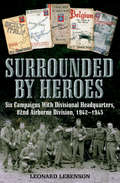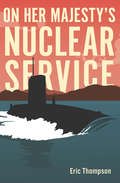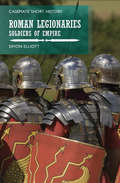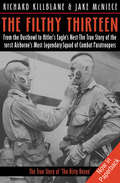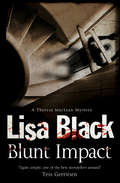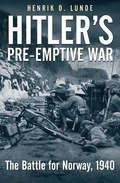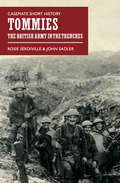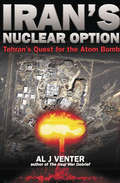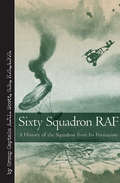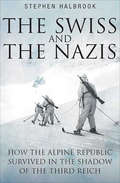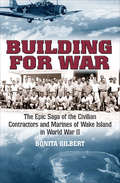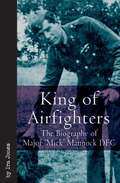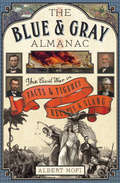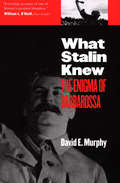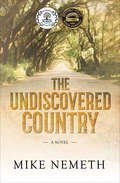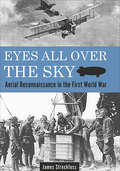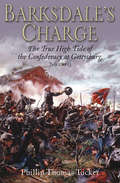- Table View
- List View
The Story of Looking
by Mark CousinsThe acclaimed author and filmmaker&’s investigation into the human gaze through history, art and science, paints an illuminating portrait of our culture. Looking can be an act of empathy or aggression. It can provoke desire or express it. And from the blurry, edgeless world we inhabit as infants to the landscape of screens we grow into, looking can define us. In The Story of Looking, filmmaker and writer Mark Cousins takes us on a tour - in words and images - through the development of the human gaze over the course of a lifetime, and the ways that looking has changed through the centuries. From great works of art to tourist photographs, from cityscapes to cinema, through science and protest, propaganda and refusals to look, the false mirrors and great visionaries of looking, this book illuminates how we construct as well as receive the things we see.The Story of Looking is a photo album and an art gallery, a road movie and a visual grammar: once you&’ve read it, you&’ll never see things the same way again.Shortlisted for the Saltire Society Non-Fiction Award &“A wide-ranging history of looking, you will gaze at it in wonder.&”—Ian Sansom, The Guardian, UK
That Was a Shiver: And Other Stories
by James Kelman&“Thought-provoking&” short stories from the Man Booker Prize–winning author of How Late It Was, How Late and Kieron Smith, Boy (Scotsman). A trucker passes through a town he used to know and a local tries to sell him his sister; a couple put their children to bed and hear a loud scratching at the wall; a Principal and his associate examine the dead body before them; a man looks into a mirror and reflects on becoming more like his father. Sparky, touching, and brilliantly daring, these stories uncover human feeling in the ordinary and the everyday, and are a reminder of Kelman&’s exceptional talent. Shortlisted for the Saltire Fiction Book of the Year · Longlisted for the Edge Hill Prize. &“Kelman brings alive a human consciousness like no other writer can.&” —Alan Warner, award-winning author of The Man Who Walks &“The mixture of the precisely but surreally bureaucratic and the casually macabre is perfectly judged.&” —The Times &“Kelman is on another level to most of the living writers in the UK.&” —The Guardian &“Kelman has always been a true and honest writer; which is why he is one of the fairly few who really matter.&” —Scotsman &“Kelman&’s language is immediately exciting; like a musician, he uses repetition and rhythm.&” —The New Yorker
Courage in Combat: Stories by and about Recipients of the Nation's Highest Decorations
by Richard J. RinaldoThese stories of military heroism, focusing on members of the Legion of Valor, offer a sweeping study of courage in service to America. Published in conjunction with the Legion of Valor of the United States of America, Courage in Combat shares the stories of military heroes from the Civil War onward. They are recipients of the Medal of Honor, the Distinguished Service Cross, the Navy Cross, and the Air Force Cross. Their awards are our nation&’s highest military decorations, given only to one in twenty thousand combatants. Among them are sergeants and generals, as well as corpsmen, civilians, engineers, &“grunts,&” and paratroopers. There are men and women, a mess attendant, aviators, spies and POWs, a cavalry scout, candidates for sainthood, and a president of the United States. The stories of these brave individuals relate personal accounts of heroism, as well as reflections on combat and war. This book also includes a short history of the Legion of Valor, America&’s oldest military service organization, and an extensive list of its members, past and present. Courage in Combat explores the concept of courage through the lives, thoughts, and actions of this elite group—most of whom would say, &“I was just doing my job.&”
BAC SI: A Green Beret Medic's War in Vietnam
by Robert Dumont Jerry KrizanA Special Forces medic delivers &“a fascinating account of an unfamiliar part of the Vietnamese War, written in a compelling style&” (History Of War). During the Vietnam War, US Army Special Forces A-Teams were deployed to isolated outposts or &“camps&” in the remote areas of South Vietnam. Their job was to recruit, train, and house members of the indigenous population while molding them into combat-ready fighting units. A-Teams consisted of up to twelve Green Beret soldiers who were experts in both combat and their individual military specialties.Bac Si, the Vietnamese term for &“medic,&” is the story of Sgt. Jerry Krizan, who was assigned to Special Forces Camp A-331 in the III Corps tactical zone, only ten miles from the Cambodian border. Because of its proximity to a major north-south North Vietnamese Army infiltration route, there were constant enemy troop movements through the camp&’s area of operations and A-331 itself came under attack on more than one occasion. The author accompanied patrols and probes into enemy territory, not only prepared to provide aid but fight as a soldier if the squad was ambushed or chose to attack. In this small-unit warfare against an expert enemy, US soldiers had to survive as best they could, with their only succor a Huey—meantime, on the ground, by themselves against unknown opposition. Our Green Beret base camps were our very first line of defense along the borders of South Vietnam, and in this book, through the eyes of a medic, we learn how dire, and confusing, a role we asked our Special Forces to play during that era.
Surrounded by Heroes: Six Campaigns with Divisional Headquarters, 82d Airborne, 1942–1945
by Leonard LebensonThis WWII memoir offers a rare behind-the-scenes view of the 82nd Airborne and its heroic contributions to Allied victory in Europe and Africa. Joining the army in 1942, Leonard Lebenson was recruited into the 82nd Airborne for his skills as a typist and draftsman. Lebenson thus gained a ringside seat for some of the greatest campaigns of World War II—from the invasions of North Africa, Sicily, and France, to the Netherlands, the Bulge, and the drive on Berlin. Throughout the campaigns, Lebenson was at the division&’s nerve center, typing orders, drafting battle maps, and acting as liaison. A rare enlisted man with top-secret status, he was in the room with Gen. Patton, Field Marshal Montgomery, &“Jumpin&’ Jim&” Gavin, and other luminaries who came through headquarters. But Lebenson also saw battle up close—by ship, plane, glider, parachute, and Jeep. With the rest of the All American Division, he was on the ground in Africa and the Ardennes, facing ever-present enemy fire. Rising from private to master sergeant, Lebenson thought that he had &“the best job in the army.&” In this revealing memoir, however, he never fails to give full credit to the men on the firing line who suffered the greatest hardships and casualties.
On Her Majesty's Nuclear Service
by Eric ThompsonA journey inside the submarines that patrolled beneath the surface to keep the peace during the Cold War, from a Royal Navy officer and engineer. During the Cold War, nuclear submarines quietly helped prevent a third world war, keeping watch and maintaining the deterrent effect of mutually assured destruction. For security reasons, very few knew the inside stories—until now. Eric Thompson is a career nuclear submarine officer who served from the first days of the Polaris missile boats until after the Cold War, ending up as the top engineer in charge of the Navy&’s nuclear power plants. Along the way, he helped develop all manner of kit, from guided torpedoes to the Trident ballistic missile system. In this vivid personal account of his submarine operations, he reveals what it was like to literally have your finger on the nuclear button. He leads the reader through top-secret submarine patrols, hush-hush scientific trials, underwater weapon developments, public relations battles with nuclear protesters, arm wrestling with politicians, and the changes surrounding gender and sexual preference in the Navy. It is essentially a human story, rich in both drama and comedy, like the Russian spy trawler that played dance music at passing submarines. There was never a dull moment—but it was always a deadly serious game. Among other subjects, Thompson discusses: • The two American nuclear submarines Thresher and Scorpion, which sank with no survivors during the Cold War • The history of submarines, including the Hunley a Confederate submarine during the US Civil War, which was the first sub to ever sink a ship—though it did so kamikaze-style • What a submarine base is like • How a Soviet sub in the Mediterranean was flushed out, earning the crew a crate of champagne from America • The author&’s personal experience with the Polaris and Trident classes of submarine, and more &“Interesting, sometimes thought provoking, but above all an entertaining read.&” —Nuclear Futures
Roman Legionaries: Soldiers of Empire (Casemate Short History)
by Simon ElliottA concise and entertaining history of the Roman legionary—from the age of Augustus through the heyday of the Roman Empire.The might of Rome rested on the back of its legions; the superbly trained and equipped fighting force with which the imperial Roman army conquered, subdued and ruled an empire for centuries. The legionary soldier served for 20 years, was rigorously trained, highly equipped, and motivated by pay, bonuses and a strong sense of identity and camaraderie. Legionaries wore full body-armor and carried a shield, as well as two javelins, a sword, and a dagger. In battle they hurled their javelins and then immediately drew their swords and charged to close combat with the enemy. They were the finest heavy infantrymen of antiquity, and a massed legionary charge was a fearsome sight.In The Roman Legionaries, Simon Elliott, author of Julius Caesar: Rome’s Greatest Warlord, provides an introduction to these elite soldiers, including their training, tactics, weapons, the men themselves, life on and off the battlefield, as well as significant triumphs and disasters in the great battles of the era.
The Filthy Thirteen: From the Dustbowl to Hitler's Eagle's Nest—The True Story of the 101st Airborne's Most Legendary Squad of Combat Paratroopers
by Richard Killblane Jake McNieceThe true story of the 101st Airborne Division&’s most notorious squad of combat paratroopers—the inspiration for the classic WWII film, The Dirty Dozen. Since World War II, the American public has learned of the exploits of the 101st Airborne Division, the paratroopers who led the Allied invasions into Nazi-held Europe. But within the ranks of the 101st, one unit attained truly legendary status. Known as the Filthy Thirteen, they were the real-life inspiration for The Dirty Dozen. Primarily products of the Dustbowl and the Depression, the Filthy Thirteen became notorious within the elite Screaming Eagles for their hard drinking and savage fighting skills. From D-Day until the end of the war, the squad&’s heart and soul—and its toughest member—was a half Native American soldier named Jake McNiece. McNiece made four combat jumps, was in the forefront of every fight in northern Europe, yet somehow never made the rank of PFC. The Filthy Thirteen offers a vivid group portrait of hardscrabble guys whom any respectable person would be loath to meet in a dark alley: a brawling bunch whose saving grace was that they inflicted more damage on the Germans than on MPs, the English countryside, and their own officers.
Blunt Impact (A Theresa MacLean Mystery #5)
by Lisa BlackA twisting forensic thriller from the New York Times–bestselling author, &“quite simply, one of the best storytellers around&” (Tess Gerritsen). Forensic scientist Theresa MacLean is puzzled by the questionable death of a female construction worker at a Cleveland building site. A witness to the death—a young girl nicknamed Ghost—may be able to help. Ghost says the woman was pushed by someone she can only identify as the Shadow Man. Soon Theresa finds herself in a race against time to protect Ghost from an unknown killer before he is able to find the little girl and silence her for good. &“An intense plot, knuckle-biting suspense, a likable heroine, and a shock ending make for a thoroughly satisfying read.&” —Booklist &“The pace doesn&’t slow in Blunt Impact.&” —Ohio.com &“The bond that MacLean forms with Ghost lends human interest and few will guess the killer&’s identity before the final desperate confrontation.&” —Publishers Weekly &“Black handles multiple plots like a pro.&” —Kirkus Reviews
Hitler's Pre-emptive War: The Battle for Norway, 1940
by Henrik O. LundeAn &“excellent&” history of the often overlooked WWII campaign in which Hitler secured a vital resource lifeline for the Third Reich (Library Journal). After Hitler conquered Poland and was still fine-tuning his plans against France, the British began to exert control over the coastline of neutral Norway, an action that threatened to cut off Germany&’s iron-ore conduit to Sweden and outflank from the start its hegemony on the Continent. The Germans responded with a dizzying series of assaults, using every tool of modern warfare developed in the previous generation. Airlifted infantry, mountain troops, and paratroopers were dispatched to the north, seizing Norwegian strongpoints while forestalling larger but more cumbersome Allied units. The German navy also set sail, taking a brutal beating at the hands of Britannia, but ensuring with its sacrifice that key harbors would be held open for resupply. As dive-bombers soared overhead, small but elite German units traversed forbidding terrain to ambush Allied units trying to forge inland. At Narvik, some six thousand German troops battled twenty thousand French and British until the Allies were finally forced to withdraw by the great disaster in France, which had then gotten underway. Henrik Lunde, a native Norwegian and former US Special Operations colonel, has written the most objective account to date of a campaign in which twentieth-century military innovation found its first fertile playing field.
Tommies: The British Army in the Trenches (Casemate Short History)
by John Sadler Rosie Serdiville&“Everything you need to know to get you started on the subject of the men of the British Army who found themselves in the trenches in WWI. Superb.&” —Books Monthly British soldiers have been known as Tommies for centuries, but the nickname is particularly associated with the British infantryman in the trenches of World War I. In August 1914, a small professional force of British soldiers crossed the Channel to aid the French and Belgians as the German army advanced. As it became apparent that the war would not, in fact, be over by Christmas, a vast drive for volunteer soldiers began. As enthusiasm for enlistment tailed off, eventually conscription was introduced in order to replenish the forces weakened by years of bloodshed. By 1918 the British army was transformed, fielding 5.5 million men on the western front alone. These Tommies fought an entirely new type of war, living in vast trench systems, threatened by death from the air and gas attack as well as by bullet, bomb, or bayonet. This introduction explores the experience of Tommies on the western front, explaining how their war evolved and changed from the mobile battles of August 1914 to the final days of the war, and discussing daily life as an infantryman on the front line using firsthand accounts, contemporary poems, and songs. The Casemate Short History Series &“would be excellent for someone with an early interest in military history or for someone talking history at school. Very readable and easy to understand with some good illustrations&” (Army Rumour Service).
Iran's Nuclear Option: Tehran's Quest for the Atom Bomb
by Al J. Venter“The most systematic exposition to date about Iran’s nuclear program and its role in world affairs” (Middle East Quarterly).Since the Islamic Republic of Iran admitted that it was secretly producing highly enriched, weapons-grade uranium, nations have struggled to react appropriately. For the first time, and in full detail, this book explains exactly what the Europeans and United Nations have been trying to forestall.Iran could shortly have the ability to strike its immediate Middle Eastern neighbors—and more distant nations—with nuclear weapons. With the size to dominate its region, Iran also has an avowed mission to export its theocratic principles, and in recent decades, has been a notorious supporter of terrorist organizations. Its parallel development of atomic bombs represents the greatest threat to the balance of world power we’ve seen in the new millennium.Here, defense expert Al Venter reveals the extent to which Iran’s weapons program has developed and the clandestine manner in which its nuclear technology has been acquired. He demonstrates how Tehran has violated the Nuclear Non-Proliferation Treaty and details the involvement of several countries shown by the IAEA to have trafficked in illegal nuclear materials. He proves, for the first time, a direct link between the now-defunct South African apartheid regime’s nuclear program and Tehran’s current nuclear ambitions.Venter digs deep into subjects such as Iran’s fervor on behalf of Shiite Islam, its missile program—developed alongside its nuclear one—and the role of the Pasdaran, the Revolutionary Guards, whose tentacles have spread throughout the Middle East and increasingly farther afield. While noting Tehran’s support of terrorist groups such as Hezbollah, Venter follows closely how the Persian homeland itself has progressed toward a strategic nuclear capability that would make recent terrorist attacks look obsolete. Iran’s Nuclear Option is essential reading for anyone with an interest in global security, the perilous volatility of the Middle East, and America’s options, should it be willing and able to counter the threat while time remains.
Sixty Squadron RAF: A History of the Squadron from Its Formation (Vintage Aviation Library)
by A.J.L. ScottThis candid WWI memoir takes readers inside the cockpit with an RAF officer on the Western Front from the outbreak the Great War until its end in 1918.Louis Arbon Strange was at the Royal Air Force’s Central Flying School when war broke out in 1914. He immediately reported to Royal Flying Corps headquarters and joined No.5 Squadron. Strage remained on active duty throughout the war, serving his country over the Western Front from August of that year until the enemy’s surrender.Strange transferred to No.6 Squadron in 1915 and went on to form and command No.23 Squadron. Due to illness, he did not accompany his Squadron to France, but spent that time training others. He took charge of the Machine-Gun School at Hythe and other schools of aerial gunnery before returning to the Front. There he commanded the 23rd Wing, and finally took command of the 80th Wing from June 1918 until the end of the war. As Strange chronicles his experiences, he provides unique insight into how and why the Allied airmen eventually prevailed.
The Swiss and the Nazis: How the Alpine Republic Survived in the Shadow of the Third Reich
by Stephen HalbrookThe award-winning author of Target Switzerland uses “a wide breadth of research to attempt to answer why Switzerland escaped the Nazi onslaught” (Daly History Blog).While surrounded by the Axis powers in World War II, Switzerland remained democratic and, unlike most of Europe, never succumbed to the siren songs and threats of the Nazi goliath.This book tells the story with emphasis on two voices rarely heard. One voice is that of scores of Swiss who lived in those dark years, told through oral history. They mobilized to defend the country, labored on the farms, and helped refugees. The other voice is that of Nazi Intelligence, those who spied on the Swiss and planned subversion and invasion. Exhaustive documents from the German military archives reveals a chilling rendition of attack plans which would be dissuaded in part by Switzerland’s armed populace and Alpine defenses.Laced with unique maps and photos, the book reveals how the Swiss mobilized an active “spiritual defense” of their country—including the use of the press and cabaret as weapons against totalitarianism—and explores the role of women in the military and economy, the role of Jewish officers in the highest levels of the Swiss army, and the role of Switzerland itself as America’s window on the Reich. “Halbrook succeeds not only in achieving a thorough analysis of Switzerland’s armed neutrality, but also in revealing through their own voices the willingness of ordinary citizens to accept total war in order to preserve their freedom.”—Swiss American Historical Society Review
The People on Privilege Hill
by Jane Gardam“Engrossing stories of hilarity and heartbreak” from the Whitbread Award–winning author of the Old Filth trilogy (The Seattle Times).A collection of stories from a writer at the height of her powers—a celebrated stylist admired for her caustic humor, freewheeling imagination, love of humanity, and wicked powers of observation. This is a delightful grouping of stories, witty and wise, that includes the return of Sir Edward Feathers, “Old Filth” himself.“[Gardam’s] stories, like delicate tapestries, are alight with colors.” —The Times (London)“When Gardam hits her mark, like other exemplary short-story writers such as William Trevor, Sylvia Townsend Warner and Elizabeth Taylor, she can be dazzling.” —The Guardian“Gardam’s brisk narration and fearless temperament make for serious fun.” —Kirkus Reviews (starred review)“Wry, economical and perpetually surprising, these 14 stories from English novelist Gardam follow the last of the intrepid, stiff upper lip WWII generation of British ladies and gentlemen. . . . Gardam vividly evokes an age of iron wills.” —Publishers Weekly“Gardam displays the consummate skill of the short-story-teller, which is that of the caricaturist, the ability to capture a personality in a few brief strokes. . . . Privilege Hill is a collection of gentle stories that you could read to your grandmother, with the kind of sharp wit that would no doubt give her a secret smile. But they’re deeper than they look . . . so don’t read them all at once.” —The Bookbag
Building for War: The Epic Saga of the Civilian Contractors and Marines of Wake Island in World War II
by Bonita GilbertThe story of the Americans who came under attack five hours after Pearl Harbor was hit: &“Intriguing, informative, gripping, and at times very moving&” (Naval Historical Foundation). This intimately researched work tells the story of the thousand-plus Depression-era civilian contractors who came to Wake Island, a remote Pacific atoll, in 1941 to build an air station for the US Navy—charting the contractors&’ hard-won progress as they scramble to build the naval base, as well as runways for US Army Air Corps B-17 Flying Fortresses, while war clouds gather over the Pacific. Five hours after their attack on Pearl Harbor, the Japanese struck Wake Island, which was now isolated from assistance. The undermanned Marine Corps garrison, augmented by civilian-contractor volunteers, fought back against repeated enemy attacks, at one point thwarting a massive landing assault. The atoll was under siege for two weeks as its defenders continued to hope for the US Navy to come to their rescue. Finally succumbing to an overwhelming amphibious attack, the surviving Americans, military and civilian, were taken prisoner. While most were shipped off to Japanese POW camps for slave labor, a number of the civilians were retained as workers on occupied Wake. Later in the war, the last ninety-eight Americans were brutally massacred by their captors. The civilian contractors who had risked distance and danger for well-paying jobs ended up paying a steep price: their freedom and, for many, their lives. Written by the daughter and granddaughter of civilians who served on Wake Island, Building for War sheds new light on why the United States was taken by surprise in December 1941, and shines a spotlight on the little-known, virtually forgotten story of a group of civilian workers and their families whose lives were forever changed by the events on this tiny atoll.
King of Airfighters: The Biography of Major 'Mick' Mannock DFC (Vintage Aviation Library)
by Ira JonesA penetrating study of Britain’s top World War I fighter ace, written by fellow pilot Ira Jones, the author of An Air Fighter’s Scrapbook.Ira Jones’ biography of Britain’s top-scoring ace of the First World War has become the subject of some controversy over the last few years; most notably, it claims seventy-three “kills” for Mannock, making him the number-one-scoring Allied ace of the war. Later research has thrown serious doubt on this assertion, and indeed, Mannock himself only claimed fifty-one kills.Jones’ biography is nevertheless an important account, especially when seen in the context of the time in which it was first written. In particular, the biography delves into the mind of Mannock, portraying the singular nature of his character and the true stress that these pioneer air fighters experienced in the last few months of the war.Originally published in 1934 by Ivor Nicholson and Watson in London, the book has been reprinted—most recently in the 1990s by Greenhill Books as part of its Vintage Aviation Library—and reproduced from the original 1930s version of the book.Not a word has been changed in this Casemate edition, but the original, very dated type and page layout have been reworked, as has been the format in which the book is presented, to give a beautiful new treatment to this classic of aviation literature.
The Blue & Gray Almanac: The Civil War in Facts & Figures, Recipes & Slang
by Albert Nofi“Help[s] readers to examine this period in history with a more cultural perspective than other books have . . . clear, concise, and crisp . . . fascinating” (San Francisco Book Review).• During the final days of the war, some Richmond citizens would throw “Starvation Parties,” soirees at which elegantly attired guests gathered amid the finest silver and crystal tableware, though there were usually no refreshments except water.• Union Rear-Admiral Goldsborough was nicknamed “Old Guts,” not so much for his combativeness as for his heft—weighing about three hundred pounds, he was described as “a huge mass of inert matter.”• 30.6 percent of the 425 Confederate generals, but only 21.6 percent of the 583 Union generals, had been lawyers before the war.• In 1861, J.P. Morgan made a huge profit by buying five thousand condemned US Army carbines and selling them back to another arsenal—taking the army to court when they tried to refuse to pay for the faulty weapons.• Major General Loring was reputed to have so rich a vocabulary that one of the men remarked he could “curse a cannon up hill without horses.”• Many militia units had a favorite drink—the Charleston Light Dragoons’ punch took around a week to make, while the Chatham Artillery required a pound of green tea leaves be steeped overnight.• There were five living former presidents when the Civil War began, and seven veterans of the war, plus one draft dodger, went on to serve as president.These stories and many more can be found in this treasury of anecdotes, essays, trivia, and much more—including numerous illustrations—that bring this historical period to vivid life.
Jane and Prudence: A Novel (Vmc Ser. #516)
by Barbara PymThe author of Excellent Women explores female friendship and the quiet yearnings of British middle-class life—a literary delight for fans of Jane Austen. Jane Cleveland and Prudence Bates were close friends at Oxford University, but now live very different lives. Forty-one-year-old Jane lives in the country, is married to a vicar, has a daughter she adores, and lives a very proper life in a very proper English parish. Prudence, a year shy of thirty, lives in London, has an office job, and is self-sufficient and fiercely independent—until Jane decides her friend should be married. Jane has the perfect husband in mind for her former pupil: a widower named Fabian Driver. But there are other women vying for Fabian&’s attention. And Pru is nursing her own highly inappropriate desire for her older, married, and seemingly oblivious employer, Dr. Grampian. What follows is a witty, delightful, trenchant story of manners, morals, family, and female bonding that redefines the social novel for a new generation.
What Stalin Knew: The Enigma of Barbarossa
by David E. MurphyThis &“riveting account of one of history&’s greatest blunders&” chronicles Russia&’s tragic mishandling of Nazi Germany&’s invasion during WWII (William L. O&’Neill, The New Leader). On June 22, 1941, Nazi Germany&’s Operation Barbarossa was launched against Russia. Within days, the invading army had taken hundreds of thousands of Soviet captives while the Luftwaffe bombed a number of Russian cities, including Minsk. Though accurate intelligence about the plan had been available to Stalin before the attack, he chose not to heed the warning. In What Stalin Knew, historian and former chief of the CIA&’s Soviet division David E. Murphy illuminates many of the enigmas surrounding the catastrophic invasion, offering keen insights into Stalin&’s thinking and the reasons for his fatal error of judgment. A story of successful misinformation campaigns, and a leader more paranoid about threats from within his regime than from an aggressive neighbor, this authoritative history sheds essential new light on the most consequential event in the Eastern Front of World War II. &“If, after the war, the Soviet Union had somehow been capable of producing an official inquiry into the catastrophe of 6/22—comparable in its mandate to the 9/11 commission here—its report might have read a little like [this book]. . . . Murphy brings to his subject both knowledge of Russian history and an insider&’s grasp of how intelligence is gathered, analyzed and used—or not.&” —Niall Ferguson, The New York Times Book Review &“A fascinating and meticulously researched account of mistaken assumptions and errors of judgment . . . Never before has this fateful period been so fully documented.&” —Henry A. Kissinger
The Undiscovered Country: A Novel
by Mike NemethWinner of the Beverly Hills Book Award for Southern Fiction: &“A precise, elaborate tale that shows just how menacing a family&’s history can be&” (Kirkus Reviews). When Randle&’s mother becomes critically ill he rushes to her bedside to comfort her. As he puts her affairs in order, he expects to face long-suppressed memories and contemptuous siblings, but he does not expect to discover that in her younger years, while he was an unaware child, his mother was a feisty, courageous woman who bravely battled an abusive husband and made fateful decisions for the good of her children. Now she wants nothing more than to die with dignity, with her secrets intact. But Randle learns that her husband was not his birth father, that a wealthy man who is being extorted claims to be his birth father, and his mother hopes to take the secret of his biological father&’s true identity to her grave. As he grapples with the implications for his own identity, Randle uncovers a murder no one knew had been committed and struggles to protect the unwitting man who intends to bequeath him millions of dollars. When he unravels his mother&’s dark secrets he unlocks his own demons and is left with the agonizing choice between revenge and greed or forgiveness. &“An intriguing who-done-it story that critiques antiquated social practices and values while remaining affectionate to its Georgia setting . . . A story centered on an all-around Southern family, complete with all the dying pageantry and tradition of passing generations in a changing South.&” —Deep South magazine
Eyes All Over the Sky: Aerial Reconnaissance in the First World War
by James StreckfussThe impact of the unsung heroes of WWI—“a must for any aviation enthusiast to further complement work on aerial reconnaissance in modern warfare” (Roads to the Great War),Beyond the heroic deeds of the fighter pilots and bombers of World War I, the real value of military aviation lay elsewhere; aerial reconnaissance, observation, and photography impacted the fighting in many ways, but little has been written about it. Balloons and airplanes regulated artillery fire, infantry liaison aircraft followed attacking troops and the retreats of defenders, aerial photographers aided operational planners and provided the data for perpetually updated maps, and naval airplanes, airships, and balloons acted as aerial sentinels in a complex anti-submarine warfare organization. Reconnaissance crews at the Battles of the Marne and Tannenberg averted disaster.Eyes All Over the Sky fully explores all the aspects of aerial reconnaissance and its previously under-appreciated significance. Also included are the individual experiences of British, American, and German airmen—true pioneers of aviation warfare.“With an interesting selection of photos, the book is not only an excellent reference—it is historically important.” —Classic Wings“This well-researched history belongs on the shelf of anyone with a serious interest in the air war or the ground war of 1914-1918.” —Steve Suddaby, former president of the World War One Historical Association
For Richer, For Poorer: Confessions of a Player
by Victoria CorenThe BBC host and professional poker player delivers &“a terrific poker book and a terrific memoir…engaging, lucid, and full of verve&” (The Guardian, UK). Author, columnist, and BBC show host Victoria Coren Mitchell has won and lost at poker all over the world, from Liverpool to Las Vegas, and from the Isle of Man to Monte Carlo. She began playing as a teenager &“to make friends and meet boys,&” but by the age of thirty-three she had won the million-dollar European championship and forgotten to have kids. Something had either gone very right or very wrong. This is a true story of happiness and heartbreak, smoke and mirrors, bright lights and shady characters. It is a touching and very funny memoir of friendship and belonging, love and loss. It might also teach you how to win a million.&“A book so rich in detail, so full of laughter, that you feel as if the coolest member of your family has just let you in on a secret so delicious you will savor it forever.&”—The Times, UK&“Vivid … Unflinchingly honest … A compulsive read which may well leave you reaching for a pack of cards&”—Elle
Barksdale's Charge: The True High Tide of the Confederacy at Gettysburg, July 2, 1863
by Phillip Thomas TuckerThere is &“never a dull moment&” in this &“excellent account&” of an overlooked Confederate triumph during the Civil War&’s Battle of Gettysburg (San Francisco Book Review). While many Civil War buffs celebrate Picket&’s Charge as the climactic moment of the Battle of Gettysburg, the Confederate Army&’s true high point had come the afternoon before. When Longstreet&’s corps triumphantly entered the battle, the Federals just barely held on. The foremost Rebel spearhead on that second day of the battle was Brig. Gen. William Barksdale&’s Mississippi brigade, which launched what one Union observer called the &“grandest charge that was ever seen by mortal man.&” On the second day of Gettysburg, the Federal left was not as vulnerable as Lee had envisioned, but had cooperated with Rebel wishes by extending its Third Corps into a salient. When Longstreet finally gave Barksdale the go-ahead, the Mississippians utterly crushed the peach orchard salient and continued marauding up to Cemetery Ridge. Hancock, Meade, and other Union generals had to gather men from four different corps to try to stem the onslaught. Barksdale himself was killed at the apex of his advance. Darkness, as well as Confederate exhaustion, finally ended the day&’s fight as the shaken, depleted Federal units took stock. They had barely held on against the full ferocity of the Rebels on a day that would decide the fate of the nation.
Guerrilla Warfare: Kings of Revolution (Casemate Short History)
by Peter PolackThis concise history of guerilla warfare presents profiles in combat courage from George Washington to Simón Bolívar, Mao Zedong, and beyond. The concept of guerrilla warfare is centuries old, with Sun Tzu&’s writing on the subject dating back to the sixth century BC. One of the earliest recorded examples of guerrilla tactics deployed by a military leader was the campaign of Roman general Fabius Maximus, who took a course of evasion and harassment against Hannibal&’s columns. Guerilla Warfare is a compendium of prominent guerrilla leaders across the globe, from thirteenth-century Scotland&’s William Wallace to modern-day Sri Lanka&’s Velupillai Prabhakaran. It profiles each leader to analyze their personal history, military tactics, and political strategy. All are home-grown leaders of extended guerrilla campaigns. Many became the first leaders of their liberated countries. Both victories and defeats are included here in an analysis of effective guerrilla tactics as well as counterinsurgency strategies. Today, the labels of insurgent, freedom fighter, and jihadi are fast replacing guerrilla. The old notion of the guerrilla, associated with fights for independence and the end of colonialization, has dimmed with modern and far-reaching religious insurgencies taking their place. This concise history gives a fascinating overview of a once history-altering form of warfare.

